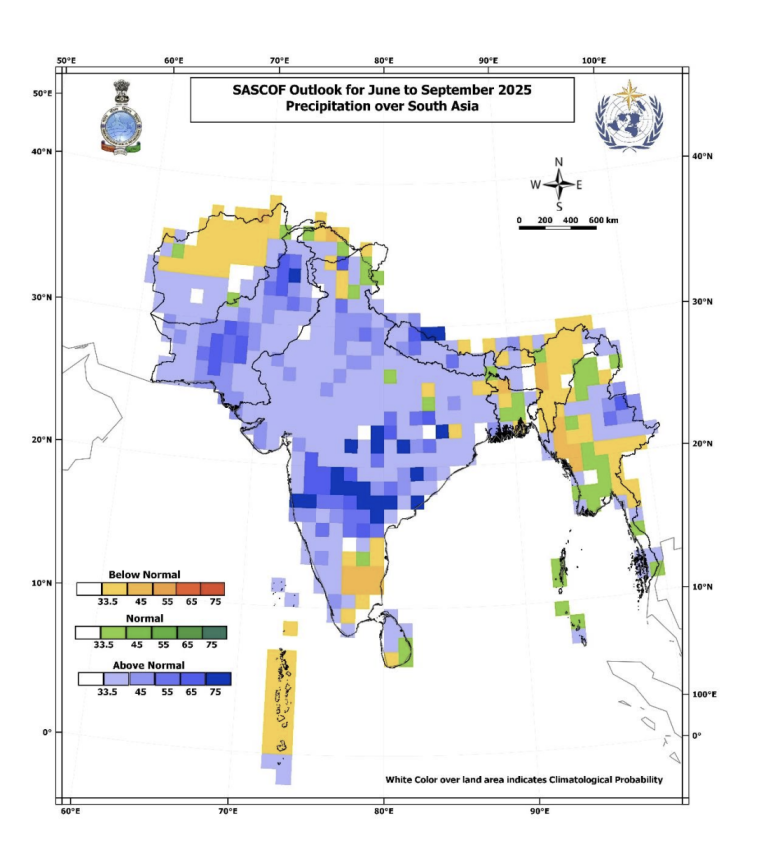Above normal rainfall is most likely during the 2025 southwest monsoon season (June - September) over most parts of the South Asia. Above average temperatures are also expected over much of the region, according to the South Asia Climate Outlook Forum.
A few areas in northern, eastern and north-eastern parts of the region are predicted to receive below normal rainfall.
Advance information about the likely performance of the monsoon underpins planning and decision-making in climate-sensitive sectors such as agriculture and renewable energy (hydropower). It also informs public health and risk-management strategies. Seasonal climate outlooks are one of a suite of products from the World Meteorological Organization community which protect lives and livelihoods, and are worth billions to the international economy.
From June through September, the Southwest Monsoon dominates life in much of South Asia. Accounting for 75-90 per cent of the annual rainfall in most parts of the region (excepting Sri Lanka and south-eastern India), replenishing water resources like rivers, lakes, and groundwater, which are vital for irrigation and drinking water supplies.
It is the lifeblood of national economies, agricultural production and food security. However, heavy monsoon-related rainfall and flooding also causes many casualties each year. This is why the international Early Warnings for All initiative is a priority for countries in the region.
The South Asian Climate Outlook Forum was launched in 2010 under the auspices of WMO to engage countries that share a strong and common interest in understanding and forecasting the monsoon. It is one of a worldwide network of Regional Climate Outlook Forums supported by WMO and its partners to promote collaboration and information sharing on seasonal climate prediction and related issues. It is an example of the cross-border cooperation and knowledge-sharing that has characterized the 75-year history of WMO.

The regional climate outlook was collaboratively developed by all nine National Meteorological and Hydrological Services (NMHSs) in the region, namely Afghanistan, Bangladesh, Bhutan, India, Maldives, Myanmar, Nepal, Pakistan and Sri Lanka. The NMHSs are responsible for downscaling the predictions to inform local decision-making.
The process involved an expert assessment of the prevailing global climate conditions. Currently neutral El Niño Southern Oscillation (ENSO) conditions are prevailing over the tropical Pacific Ocean and are expected to continue during the southwest monsoon season. El Niño and La Niña and other climate phenomenon like the Indian Ocean Dipole are major influencers.
The Northern Hemisphere winter and spring snow cover extent has a general inverse relationship with the subsequent summer monsoon rainfall over South Asia. The snow cover area during January and March respectively, was 4th and 6th lowest ever recorded during the past 59 years.






